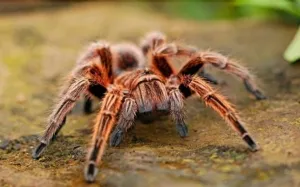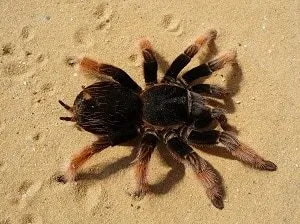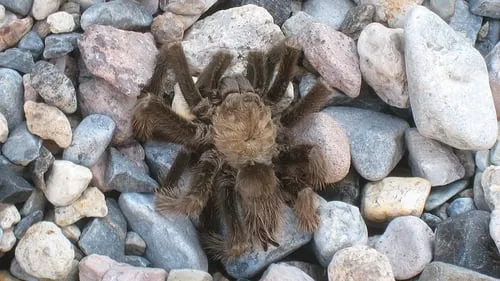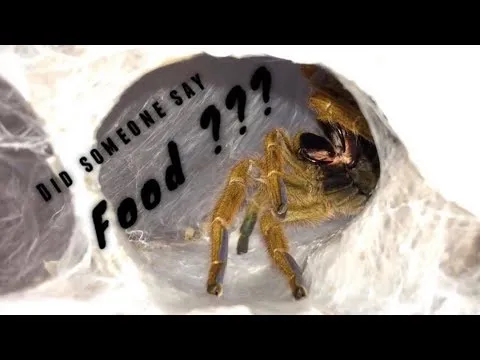What Influences Tarantula Cost?
The cost of owning a tarantula can vary significantly, making it essential to understand the factors that drive these price fluctuations. Several key elements influence the overall cost, from the initial purchase price of the spider itself to ongoing expenses related to its care and maintenance. By familiarizing yourself with these factors, prospective tarantula owners can make informed decisions and budget effectively for their new pet. This knowledge not only ensures responsible pet ownership but also helps in choosing a tarantula that aligns with their financial capabilities and lifestyle.
Species and Rarity
The species of tarantula is perhaps the most significant determinant of its cost. Rare or highly sought-after species, such as certain Poecilotheria or Pamphobeteus varieties, often command premium prices. The rarity can be due to several factors, including limited breeding success, restricted natural habitats, or simply high demand among collectors. More common species, like the Chilean Rose Hair or the Mexican Red Knee, are generally more affordable due to their widespread availability. When considering a tarantula, research the species’ typical price range to understand what to expect and avoid overpaying. Tarantulas that are more common tend to be more affordable due to their higher availability. Conversely, rare or in-demand species can come with a hefty price tag.
Size and Age

The age and size of a tarantula also affect its cost. Spiderlings, which are young tarantulas, are typically less expensive than juveniles or adults. This is because spiderlings are more delicate and require more intensive care to ensure survival. As tarantulas mature, their value generally increases. Adult tarantulas, particularly females, are often more expensive due to their longer lifespans and potential for breeding. The size of the tarantula, which often corresponds to its age, also influences the price. Larger, more developed tarantulas are usually priced higher than smaller ones. This is because they are closer to reaching their full size and are often easier to care for, as they are past the most vulnerable stages of their development. Consider what stage of life you want to bring your tarantula in.
Origin and Breeding
The origin of a tarantula, whether it is captive-bred or wild-caught, can influence its cost. Captive-bred tarantulas are generally preferred because they are typically healthier, acclimated to handling, and free from parasites or diseases common in wild-caught specimens. Breeders often invest significant time and resources in raising tarantulas, which is reflected in their prices. Wild-caught tarantulas may be cheaper initially, but they can pose health risks and may not adapt well to captivity. The breeding practices used by a seller can also affect the price. Reputable breeders who prioritize the health and well-being of their tarantulas, and who are transparent about their breeding practices, may charge more. Knowing the origins of your tarantula can ensure you purchase the best care for it.
Availability
The availability of a particular tarantula species plays a crucial role in determining its cost. Species that are readily available from multiple breeders and pet stores will typically be more affordable. Conversely, tarantulas that are in high demand but have limited supply will be more expensive. The popularity of a species, influenced by factors like appearance, temperament, and ease of care, can also impact its price. Keep in mind that the availability of certain species can fluctuate seasonally or based on breeding cycles. Doing your research on availability is key to understanding the tarantula’s cost.
Morphs and Color Variations

Certain tarantula species exhibit color morphs or unique variations in appearance, which can significantly impact their cost. These morphs often result from selective breeding or genetic mutations, making them more desirable and valuable to collectors. For instance, a tarantula with a striking color pattern or a rare genetic trait may fetch a higher price than a standard specimen. The rarity of the morph, along with its aesthetic appeal, drives up the demand and, consequently, the price. If you are interested in a specific color morph, expect to pay a premium. The uniqueness and visual appeal of these variations often make them highly prized, leading to increased prices for those seeking a standout addition to their collection.
Seller Reputation
The reputation of the seller or breeder can influence the price of a tarantula. Reputable sellers who prioritize the health and well-being of their tarantulas, and who offer excellent customer service, may charge more than less established vendors. Purchasing from a reputable source provides several benefits, including assurance of the tarantula’s health, accurate species identification, and ongoing support for any questions or concerns. Well-established sellers invest in their reputation by providing healthy, well-cared-for tarantulas and offering reliable advice. While the initial price might be higher, the added value of a reputable seller often makes it a worthwhile investment, providing peace of mind and a positive experience for the tarantula owner.
Overall Health and Appearance
The overall health and appearance of a tarantula are critical factors influencing its cost. A healthy tarantula will display vibrant colors, exhibit an active and alert demeanor, and have a well-nourished abdomen. Tarantulas with visible health issues, such as missing limbs, injuries, or signs of parasites or disease, will typically be less expensive, if they are sold at all. Always inspect a tarantula carefully before purchasing to ensure it is in good condition. A healthy tarantula is a sign that the seller has provided proper care and that the spider has the best chance of thriving in its new home. In contrast, a tarantula with health problems might require expensive veterinary care. Therefore, a healthy tarantula, even at a higher price point, is usually a better investment.
Other Associated Costs

Beyond the initial purchase price of the tarantula, there are numerous associated costs that prospective owners must consider. These expenses include the enclosure and setup, food and supplements, veterinary care, and ongoing maintenance. Failing to account for these costs can lead to financial strain and potentially compromise the tarantula’s well-being. It’s crucial to develop a comprehensive budget that encompasses all the expenses associated with tarantula ownership to ensure that you can provide the necessary care and create a suitable environment for your pet to thrive. The following are the key areas to budget for to ensure your tarantula lives a long and happy life.
Enclosure and Setup
The enclosure and setup for a tarantula can range in cost depending on the size and species of the tarantula, as well as the desired aesthetic. The enclosure itself, typically a glass terrarium or a plastic container, can vary significantly in price based on size and material. Additional costs include substrate, such as coconut fiber or peat moss, to create a suitable environment, along with décor items like hides, branches, and water dishes. Proper setup ensures that the tarantula has a safe and comfortable living space that meets its specific environmental needs, such as humidity and temperature. When budgeting, it’s wise to factor in both the initial setup costs and any potential upgrades or replacements that may be needed over time.
Food and Supplements
Feeding tarantulas involves ongoing expenses for food, primarily live insects such as crickets, roaches, or mealworms. The cost of food depends on the size and age of the tarantula, as well as the frequency of feeding. Spiderlings require smaller, more frequent meals, while larger tarantulas eat less often but consume more food per feeding. In addition to live insects, some tarantula owners also provide supplements, such as calcium and vitamins, to ensure their spider receives a balanced diet. The cost of food and supplements adds up over time, so it’s important to budget accordingly. The cost of food can vary based on whether you purchase insects from a pet store or breed them yourself, which is a long-term cost-saving strategy.
Veterinary Care

While tarantulas are generally hardy creatures, they can still require veterinary care in case of illness or injury. Although specialized exotic animal vets are not as common as vets for dogs and cats, finding a qualified vet is essential for providing appropriate care. The cost of veterinary care can vary widely depending on the type of treatment needed, the location, and the vet’s fees. It’s wise to set aside a budget for potential veterinary expenses, as unforeseen health issues can arise. This could include check-ups, medication, or other necessary treatments. Being prepared for potential veterinary costs ensures that you can provide your tarantula with the medical attention it needs without financial stress.
Ongoing Maintenance
Ongoing maintenance involves various costs associated with keeping the tarantula’s enclosure clean and maintaining a healthy environment. This includes the cost of substrate replacement, which should be done periodically to remove waste and maintain hygiene, as well as the cost of cleaning supplies, such as terrarium cleaners and disinfectants. Some owners invest in tools for measuring temperature and humidity to ensure the proper environment. These costs, while relatively small individually, can accumulate over time. Proper maintenance is crucial for preventing health problems, maintaining the cleanliness of the enclosure, and ensuring the tarantula thrives. Budgeting for these recurring expenses contributes to responsible pet ownership.
Tips for Saving Money on Tarantulas
Owning a tarantula can be a rewarding experience, but it doesn’t have to break the bank. Here are some tips for saving money while still providing excellent care for your tarantula. One of the most significant savings can be found in the initial purchase. Researching different species and comparing prices from various sellers helps you find the best deals. Consider common species, which are typically more affordable. You could also consider purchasing a juvenile tarantula instead of an adult, because of the lower price. Additionally, buying supplies in bulk can often save money in the long run, particularly for food and substrate. Maintaining your tarantula’s health through proper care minimizes the need for expensive veterinary visits. Furthermore, the tarantula hobby is a community, and finding other enthusiasts can provide you with valuable advice and cost-effective care.
